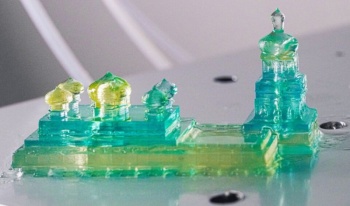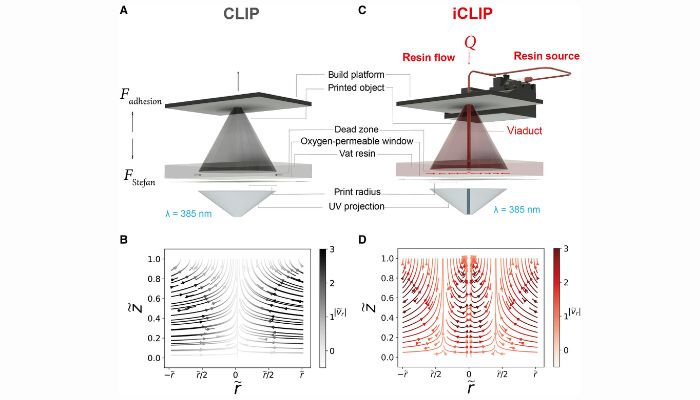
3D printing just keeps on evolving. Most recently, Stanford engineers, including Joseph DeSimone, have designed a new 3D printing method that they claim is 5 to 10 times faster than the quickest high-resolution printer currently available. Not only that, but with this injection continuous liquid interface technology (iCLIP), users would be able to use multiple types of resin in a single part.
If the name CLIP rings a bell, you are not alone. Continuous liquid interface production was first invented by Joseph DeSimone (one of the creators of this newest technology) and colleagues back in 2015 and is the technology that Carbon was founded upon. Of course, their technology has since been renamed to Digital Light Synthesis, and Joseph DeSimone stepped down from his CEO position in 2019 to serve as a Chairman of the Board of the Directors at Carbon, but the basis of the technology is the same. This latest innovation serves to allow for multi-material, resin printing as it combines traditional clip with active injection of resins where needed.

Photo Credits: Stanford University
How Does iCLIP Work?
iCLIP is a vat polymerization method using UV-light, but it seeks to improve on some of the perceived limitations of CLIP while still benefiting from the advantages of the technology. Notably, it will continue integrate a so-called “dead zone” or layer of oxygen which serves to greatly decrease adhesion forces during the photopolymerization stage. These forces are common in resin 3D printing, and by eliminating them, it is possible to significantly increase printing speed. Indeed, in the research paper, the engineers note that CLIP itself could belong to a “third generation” of vat photopolymerization thanks to its speed and other benefits. However, the original technology still has drawbacks including being limited to relatively low-viscosity resins and not enabling multi-material printing.
This latest process should address these. Notably by using mounted syringe pumps and adding additional resin at key points in the process. This further allows for the reduction of adhesive forces, by almost two orders of magnitude according to the data, allowing for even faster printing and eliminating common defects. Additionally, thanks to the addition of resin at various points, it will allow for multi-material printing, something that is not usually possible with vat photopolymerization methods.
DeSimone, who is also the Sanjiv Sam Gambhir Professor in Translational Medicine and professor of radiology and of chemical engineering at Stanford, concludes, “This new technology will help to fully realize the potential of 3D printing. It will allow us to print much faster, helping to usher in a new era of digital manufacturing, as well as to enable the fabrication of complex, multi-material objects in a single step.” The next step for the researchers will be to develop software that is capable of optimizing the fluid distribution network for each part. You can learn more in the research article, available for download HERE.
*Cover Photo Credits: Stanford University



